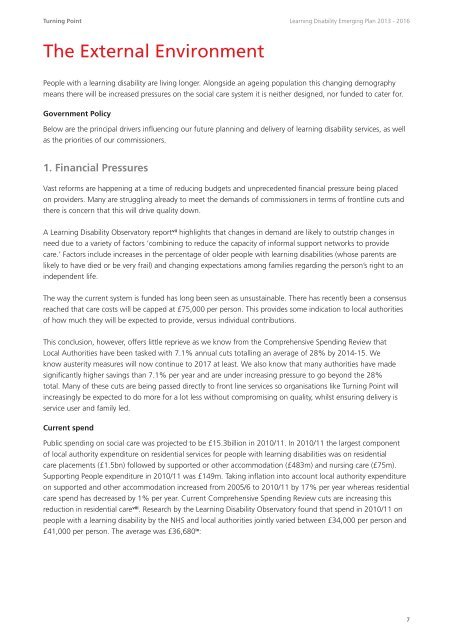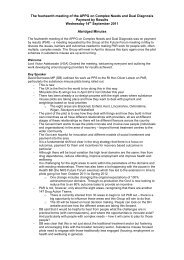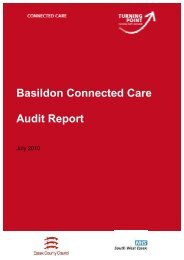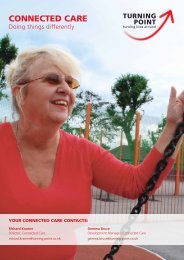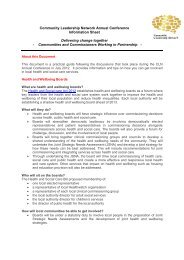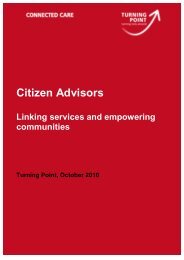Learning Disability Emerging Plan - Turning Point
Learning Disability Emerging Plan - Turning Point
Learning Disability Emerging Plan - Turning Point
Create successful ePaper yourself
Turn your PDF publications into a flip-book with our unique Google optimized e-Paper software.
<strong>Turning</strong> <strong>Point</strong> <strong>Learning</strong> <strong>Disability</strong> <strong>Emerging</strong> <strong>Plan</strong> 2013 - 2016The External EnvironmentPeople with a learning disability are living longer. Alongside an ageing population this changing demographymeans there will be increased pressures on the social care system it is neither designed, nor funded to cater for.Government PolicyBelow are the principal drivers influencing our future planning and delivery of learning disability services, as wellas the priorities of our commissioners.1. Financial PressuresVast reforms are happening at a time of reducing budgets and unprecedented financial pressure being placedon providers. Many are struggling already to meet the demands of commissioners in terms of frontline cuts andthere is concern that this will drive quality down.A <strong>Learning</strong> <strong>Disability</strong> Observatory report vii highlights that changes in demand are likely to outstrip changes inneed due to a variety of factors ‘combining to reduce the capacity of informal support networks to providecare.’ Factors include increases in the percentage of older people with learning disabilities (whose parents arelikely to have died or be very frail) and changing expectations among families regarding the person’s right to anindependent life.The way the current system is funded has long been seen as unsustainable. There has recently been a consensusreached that care costs will be capped at £75,000 per person. This provides some indication to local authoritiesof how much they will be expected to provide, versus individual contributions.This conclusion, however, offers little reprieve as we know from the Comprehensive Spending Review thatLocal Authorities have been tasked with 7.1% annual cuts totalling an average of 28% by 2014-15. Weknow austerity measures will now continue to 2017 at least. We also know that many authorities have madesignificantly higher savings than 7.1% per year and are under increasing pressure to go beyond the 28%total. Many of these cuts are being passed directly to front line services so organisations like <strong>Turning</strong> <strong>Point</strong> willincreasingly be expected to do more for a lot less without compromising on quality, whilst ensuring delivery isservice user and family led.Current spendPublic spending on social care was projected to be £15.3billion in 2010/11. In 2010/11 the largest componentof local authority expenditure on residential services for people with learning disabilities was on residentialcare placements (£1.5bn) followed by supported or other accommodation (£483m) and nursing care (£75m).Supporting People expenditure in 2010/11 was £149m. Taking inflation into account local authority expenditureon supported and other accommodation increased from 2005/6 to 2010/11 by 17% per year whereas residentialcare spend has decreased by 1% per year. Current Comprehensive Spending Review cuts are increasing thisreduction in residential care viii . Research by the <strong>Learning</strong> <strong>Disability</strong> Observatory found that spend in 2010/11 onpeople with a learning disability by the NHS and local authorities jointly varied between £34,000 per person and£41,000 per person. The average was £36,680 ix :7


